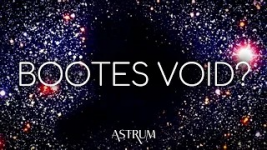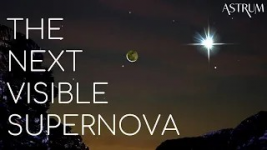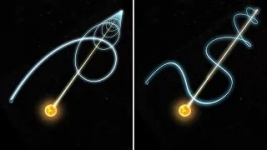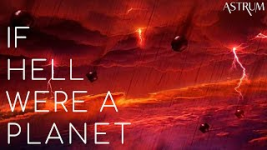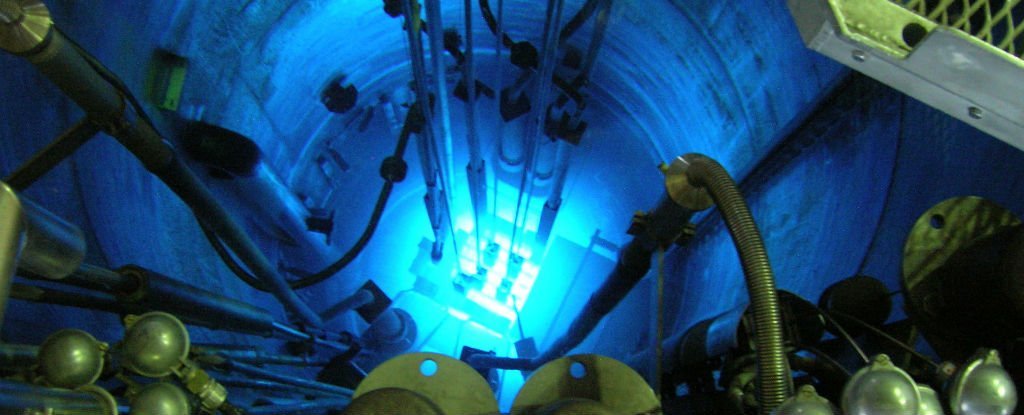I think a thread on its own for photos, video, and whatever else tickles the fancies of the astonomers out there would be fun.
I'll start of with Enceladus:
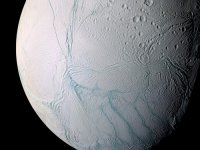
Enceladus is the sixth-largest of the moons of Saturn.[14] It was discovered in 1789 by William Herschel.[15] Until the two Voyager spacecraft passed near it in the early 1980s very little was known about this small moon besides the identification of water ice on its surface. The Voyagers showed that the diameter of Enceladus is only 500 kilometers (310 mi), about a tenth of that of Saturn's largest moon, Titan, and that it reflects almost all of the sunlight that strikes it. Voyager 1 found that Enceladus orbited in the densest part of Saturn's diffuse E ring, indicating a possible association between the two, while Voyager 2 revealed that despite the moon's small size, it had a wide range of terrains ranging from old, heavily cratered surfaces to young, tectonically deformed terrain, with some regions with surface ages as young as 100 million years old.
In 2005 the Cassini spacecraft performed several close flybys of Enceladus, revealing the moon's surface and environment in greater detail. In particular, the probe discovered a water-rich plume venting from the moon's south polar region. This discovery, along with the presence of escaping internal heat and very few (if any) impact craters in the south polar region, shows that Enceladus is geologically active today. Moons in the extensive satellite systems of gas giants often become trapped in orbital resonances that lead to forced libration or orbital eccentricity; proximity to the planet can then lead to tidal heating of the satellite's interior, offering a possible explanation for the activity.
Enceladus is one of only three outer solar system bodies (along with Jupiter's moon Io and Neptune's moon Triton) where active eruptions have been observed. Analysis of the outgassing suggests that it originates from a body of sub-surface liquid water, which along with the unique chemistry found in the plume, has fueled speculations that Enceladus may be important in the study of astrobiology.[16] The discovery of the plume has added further weight to the argument that material released from Enceladus is the source of the E ring.
In May 2011 NASA scientists at an Enceladus Focus Group Conference reported that Enceladus "is emerging as the most habitable spot beyond Earth in the Solar System for life as we know it".
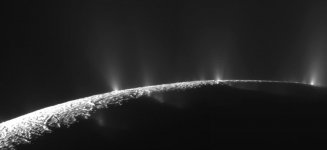
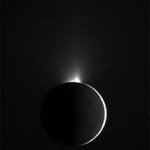
Cassini has produced thousands of amazing images and Enceladus has produced some of the most amazing. Although Titan got most of the initial attention, Enceladus with its outgassing and likely liquid oceans had been a very pleasant surprise. The images themselves are haunting and the exciting potential for astro-biological discoveries keeps me watching the news items on this moon with growing interest every day.
To think that outside of Earth, the only stellar bodies we've found to contain surface liquids (Titan) and subsurface liquids (Enceladus) would orbit a planet as far our as Saturn.
I'll start of with Enceladus:

Enceladus is the sixth-largest of the moons of Saturn.[14] It was discovered in 1789 by William Herschel.[15] Until the two Voyager spacecraft passed near it in the early 1980s very little was known about this small moon besides the identification of water ice on its surface. The Voyagers showed that the diameter of Enceladus is only 500 kilometers (310 mi), about a tenth of that of Saturn's largest moon, Titan, and that it reflects almost all of the sunlight that strikes it. Voyager 1 found that Enceladus orbited in the densest part of Saturn's diffuse E ring, indicating a possible association between the two, while Voyager 2 revealed that despite the moon's small size, it had a wide range of terrains ranging from old, heavily cratered surfaces to young, tectonically deformed terrain, with some regions with surface ages as young as 100 million years old.
In 2005 the Cassini spacecraft performed several close flybys of Enceladus, revealing the moon's surface and environment in greater detail. In particular, the probe discovered a water-rich plume venting from the moon's south polar region. This discovery, along with the presence of escaping internal heat and very few (if any) impact craters in the south polar region, shows that Enceladus is geologically active today. Moons in the extensive satellite systems of gas giants often become trapped in orbital resonances that lead to forced libration or orbital eccentricity; proximity to the planet can then lead to tidal heating of the satellite's interior, offering a possible explanation for the activity.
Enceladus is one of only three outer solar system bodies (along with Jupiter's moon Io and Neptune's moon Triton) where active eruptions have been observed. Analysis of the outgassing suggests that it originates from a body of sub-surface liquid water, which along with the unique chemistry found in the plume, has fueled speculations that Enceladus may be important in the study of astrobiology.[16] The discovery of the plume has added further weight to the argument that material released from Enceladus is the source of the E ring.
In May 2011 NASA scientists at an Enceladus Focus Group Conference reported that Enceladus "is emerging as the most habitable spot beyond Earth in the Solar System for life as we know it".


Cassini has produced thousands of amazing images and Enceladus has produced some of the most amazing. Although Titan got most of the initial attention, Enceladus with its outgassing and likely liquid oceans had been a very pleasant surprise. The images themselves are haunting and the exciting potential for astro-biological discoveries keeps me watching the news items on this moon with growing interest every day.
To think that outside of Earth, the only stellar bodies we've found to contain surface liquids (Titan) and subsurface liquids (Enceladus) would orbit a planet as far our as Saturn.
